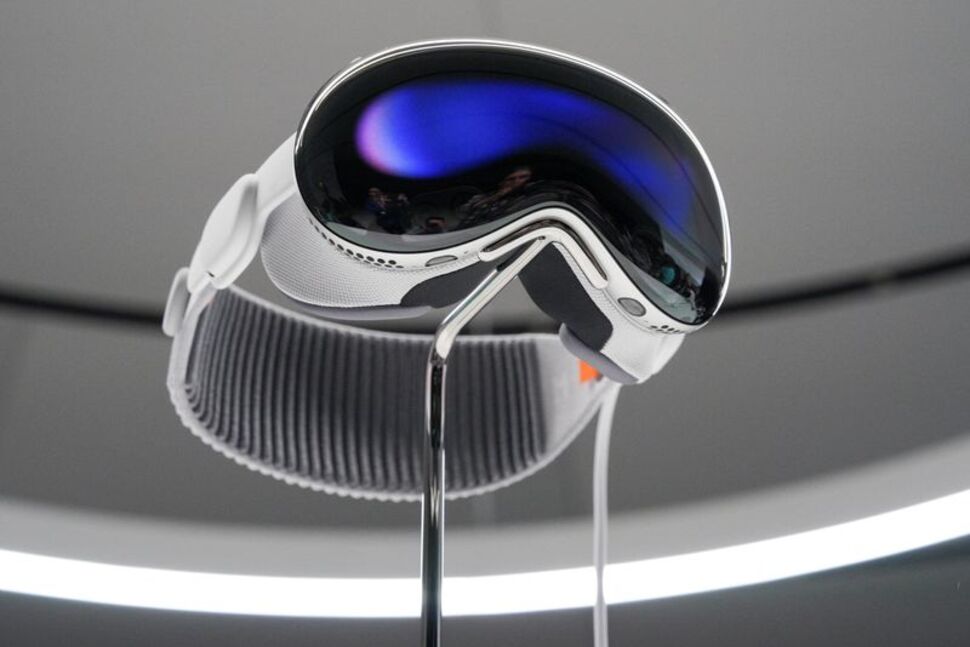As technology moves into the mid-21st century, 3D eCommerce has revolutionised online shopping. Let’s look at how eCommerce businesses can use 3D to transform how users explore products.
What is 3D Commerce?
3D commerce represents a significant advancement in online shopping. It offers consumers immersive and engaging experiences to help them make informed decisions.
It uses three-dimensional visuals and augmented reality technologies to recreate the in-store experience. And therefore, provide them a better understanding of what they’re buying.
This technology provides the depth and clarity traditional two-dimensional images can’t match. Thus, allowing customers to have a more informative and interactive view of products.
Whether it’s showing products from multiple angles, allowing customers to browse virtual catalogues, or driving more sales, 3D eCommerce provides the bridge between real-life shopping and eCommerce businesses.
Key Benefits of Implementing 3D in eCommerce
Including 3D and AR technology in your eCommerce business strategy brings many benefits.
First, it improves product communication. 3D models are great at allowing customers a detailed and interactive look at what they’re buying.
The immersive 3D experience boosts customer engagement. It lets potential customers explore products from multiple angles in a virtual space.
This higher engagement leads to more sales. Consumers understand product features and benefits better.
3D eCommerce also creates a more informed and satisfied customer base. It drives higher conversion rates and lowers product return rates compared to PDPs with simple product descriptions.
How to Start with 3D eCommerce
Integrating a 3D eCommerce strategy into your business needs both technical and creative skills.
First, focus on creating high-quality 3D models.
You can use your in-house design team or partner with experienced professionals.
Detailed 3D models are key to an engaging and interactive shopping experience. Next, we will explore strategies for implementing 3D eCommerce the right way.
3D Scanning
3D scanning captures an object’s shape and dimensions using specialised equipment called a 3D scanner.
This method produces higher-quality results than photogrammetry. The machines’ speed and accuracy provide a precise and detailed digital replica of the physical object.
Photogrammetry
Photogrammetry is an alternative method for creating 3D models.
It involves taking photographs from multiple angles to reconstruct the object’s geometry. While generally more cost-effective than scanning, it tends to produce lower-quality models.
Photogrammetry can be done using a digital camera or smartphone. Despite its accessibility, we do not recommend photogrammetry for 3D commerce.
3D Design
3D design is the art of creating three-dimensional digital models from scratch. This method provides the highest quality output, given the designer’s expertise.
It involves specialised software and demands 3D modelling and graphic design skills. The result represents the highest standard in digital product visualisation.
In-House vs. Outsource
Choosing to develop 3D models in-house or to outsource is a crucial decision for your eCommerce success.
Outsourcing to experts like us can improve product communication. It ensures top-notch quality and innovation in your digital marketing strategy.
In-house efforts need expertise and experience. Your trained staff will need tools like turntables, a digital camera, lenses, lighting, and software such as Blender.
The complexity rises with robotic camera arms, multi-camera systems, and software-driven workstations.
While in-house offers control, it is time-consuming and challenging. Plus, great talent is hard to find.
Use DemoUp Cliplister
While we don’t like to brag (ok, maybe a little), there’s another option.
Our expert designers create 3D models for brands like Logitech, Philips, and Sennheiser. We employ top talent, ensuring you get the best quality and service.
We have KPI data and expertise from working with large eCommerce clients. This helps boost sales, reduce return rates, and grow your business.
Once our team finishes, your 3D product visualisation gets published on the PDPs of the 450+ online retailers in our network. But don’t take our word for it—see our work for yourself.
Integrating 3D Elements into Your Website
In the next sections, we’ll share tips on adding 3D and AR technology to your online platform.
You’ll learn how to choose a user-friendly design and the right tools to optimise website performance. These steps aim to boost customer confidence and sales.
How to Choose the Right Platform for 3D Integration
Choosing the right software and 3D rendering techniques is key.
Not all platforms are compatible. Shopify, WooCommerce, Wix, and BigCommerce vary in how easily they integrate 3D elements.
Flixmedia integrates with major platforms but has limitations. Like where it embeds 3D models in websites.
But there’s a solution. DemoUp Cliplister integrates with any platform directly in the product gallery. This expands the reach and visibility of your 3D content.
See our blog post on Flixmedia alternatives for a detailed comparison.
User-Friendly 3D Design
User-friendly 3D design makes your 3D models detailed, engaging, and easy to interact with.
Position your models strategically in the gallery for maximum impact. Design them to encourage user engagement.
Ensure you have a user-friendly interface that makes exploring products smooth and enjoyable. This helps boost customer lifetime and conversion rates by enabling informed purchasing decisions.
Best Practices for Improved 3D Website Performance
The following strategies pave the way for a seamless and engaging digital shopping experience. They include efficient asset optimisation and responsive design.
How to Create Immersive 3D Product Experiences
To create an immersive 3D eCommerce experience, use various 3D content effectively. This includes:
- Virtual and AR technology for lifelike interaction.
- Product configurators for personalised options.
- 360-degree spin views for comprehensive angles.
- CGI images for high-quality visuals.
- 3D videos for dynamic presentations.
Focus on details in your 3D models. Each element should replicate the physical object and help customers make informed decisions.
Augmented reality is changing online shopping. AR lets customers place products in their real-life environments. This makes online shopping more like in-store experiences.
How to Showcase Products with 3D
3D product configurators enhance how you display products. They recreate the in-store experience by giving customers virtual previews on product pages.
Colour and style variations increase sales. 3D configurators let customers explore these options. They can see how different colours and styles match their preferences. This interactive experience boosts conversion rates by engaging customers directly on product pages.
With AR, detailed presentations instil confidence. Customers can visualise products in their own spaces, assessing suitability and aesthetics. This approach increases customer satisfaction and the likelihood of completing a sale. In other words, 3D eCommerce revolutionises how customers interact with and choose products.
How Brands Build Trust with 3D Commerce
Trust is the backbone of customer relationships. In the digital space, your website is your top sales rep. That’s why 3D helps shape customer perceptions of brand transparency and authenticity.
Using 3D to create accurate and immersive product images makes online shopping feel more like a physical store. This builds customer engagement and strengthens brand and product reputations.
3D eCommerce Challenges
3D eCommerce is still in its early stages, presenting several challenges for brands and retailers. Here is a breakdown:
Challenges of 3D eCommerce for Online Shops
While 3D eCommerce can improve online retail, businesses face challenges. Implementing 3D technology takes a lot of time and resources.
Many retailers can’t create models for all their products due to the high number. The biggest challenge is the cost of making high-quality 3D models. For retailers with thousands of products, it’s easier to get models from brands.
Adding 3D visualizations is also hard without special software. JavaScript tools like Three.js or Babylon.js need skilled developers.
A turnkey 3D product visualiser is a better way to add 3D models to websites. DemoUp Cliplister gets 3D models from brands and places them prominently in the product galleries of your store automatically.
Challenges of 3D eCommerce for Brands
Brands have their own set of challenges when it comes to 3D implementation. Here, a few questions should first be answered:
- Should we implement 3D as part of a marketing function?
- Should we outsource or produce 3D models in-house?
- What kind of 3D should we implement as part of our eCommerce efforts?
There are several ways you can use 3D as a brand and understanding the pros and cons of each goes a long way in the success of your 3D PDP content.
Here are some examples of content suitable for 3D shopping applications. The best choice depends on your product type, complexity, detail, and available resources.
Making the wrong choices can lead to high costs and lower returns on investment. This financial barrier may stop some businesses from exploring 3D eCommerce.
Quality assurance is another challenge. Achieving the best results requires experienced professionals skilled in 3D design and scanning.
Without solid QA, there is a risk of poor visual representations not meeting customer expectations. Most brands find it easier to outsource 3D model creation to specialists.
As eCommerce changes and XR becomes more common, addressing these challenges is crucial.
Knowing how to implement, adopt technology, manage costs, and ensure quality is key to using 3D technology in online retail.
Overcoming these obstacles will make immersive 3D experiences standard in online shopping.
3D eCommerce KPIs
When evaluating 3D eCommerce, key performance indicators (KPIs) are crucial. View rates measure how often users engage with 3D content. Bounce rates show how quickly visitors leave, giving insights into content engagement.
Interaction rates capture the level of user involvement with 3D elements. They reflect the interactive appeal. Page speed is critical, ensuring swift loading times for seamless user experiences.
Conversion rates measure the percentage of visitors completing desired actions. This indicates the impact of 3D content on driving customer decisions and transactions. Monitoring these KPIs is essential for optimising and refining 3D eCommerce strategies.
3D eCommerce Applications

As we explore 3D eCommerce applications, it’s important to understand the different types. Here are the differences between Virtual Reality (VR), Augmented Reality (AR), and Extended Reality (XR).
VR in eCommerce
Brands and retailers use Virtual Reality (VR) to offer shoppers an in-store shopping experience online.
VR lets customers explore products and see them in virtual environments. This helps them make better decisions and boosts customer engagement.
AR in eCommerce
In eCommerce, Augmented Reality (AR) transforms the shopping experience. Brands and retailers use AR to overlay digital information in the real world.
Allowing customers to try out products in their own environments helps reduce uncertainty in online purchases.
XR in eCommerce
Extended Reality (XR) is a comprehensive term. It encompasses augmented reality (AR), virtual reality (VR), and mixed reality (MR).
This catch-all category represents a continuum of immersive technologies. These technologies redefine how customers engage with digital content in eCommerce.
Digital Product Showrooms
Brands and retailers can create digital product showrooms to show off their virtual catalogues.
These showrooms give customers interactive, virtual spaces. Customers can explore and engage with products, bringing the feel of a physical experience to the digital world.
Types of 3D Content for eCommerce
There are several types of 3D content appropriate for eCommerce businesses. This section explores the unique features of 3D models, 3D product films, and AR.
We’ll also discuss 3D product photos and immersive augmented and virtual reality experiences. Read on to learn how each content type adds to a fun and dynamic online shopping experience.
3D Models
Three-dimensional (3D) models are computer representations of physical objects. In the eCommerce business, they provide detailed, interactive product visualisations.
These models let customers explore and engage with items, helping them make better decisions through a better shopping experience.
3D Product Videos
A 3D product video is another form of visual representation. It showcases a product from various angles and perspectives through motion.
These unique videos can increase customer engagement, understanding, and confidence.
Brands and retailers enjoy higher average customer lifetime value and better conversion rates. Explore the impact of well-crafted product videos on your eCommerce strategy.
3D Product Images
3D product images, also known as CGI (Computer-Generated Imagery), are lifelike digital representations of products.
These images give customers a realistic and detailed preview. This leads to higher customer engagement and confidence in their purchase decisions.
If you have a graphic designer, CGI can improve your products’ visual appeal. This is also far cheaper than product photography.
Augmented Reality & Virtual Reality Experiences
If you have 3D models, you can make them even more effective by creating VR & AR experiences.
AR & VR increase sales, reduce product return rates and give customers an immersive experience they remember.
Virtual Showrooms
Many businesses have started offering virtual showrooms as a form of immersive commerce.
Many brands use this multimedia marketing technique, especially in the automotive, furniture, and DIY sectors.
They are excellent for product visualisation and use several emerging technologies.
Virtual showrooms let eCommerce businesses display complex items in a virtual space. A key factor in helping customers understand these products.
3D Files and Formats
There are several files and format types to familiarise yourself with before jumping into the use of 3D models. Here are the most common ones you’ll find.
3D File Types
In 3D content creation, choosing the right file type is crucial. File types can vary in size, quality, and application.
- gLTF/GLB
- FBX
- OBJ
- USDZ/USD
- STL
- STEP/STP
- COLLADE
3D Formats for Amazon
When preparing 3D content for Amazon, ensure compatibility by utilising supported formats such as gLTF/GLB, OBJ, and FBX. These formats align with Amazon’s specifications. They ease smooth integration and optimal presentation of your products.
3D Formats for Online Shops
Online shops often have unique requirements for 3D formats. To ensure seamless integration, communicate with vendors about their specific needs. Having many versions of your 3D content ready allows flexibility. It helps cater to diverse platform specifications.
At DemoUp Cliplister, we offer syndication support for any format. We provide a streamlined solution to broadcast your products across a network of online shops.
Managing 3D Assets
Use the DemoUp Cliplister Digital Asset Management (DAM) system to organise, manage, share, and syndicate your 3D models. You can easily share them across our extensive network of online shops.
The Future of 3D Shopping
3D shopping is changing digital retail. Augmented reality technology and accelerated connectivity are redefining the customer experience.
Brands and retailers using this technology will see a boost in customer confidence and customer satisfaction. Shoppers can visit virtual malls from home, making 3D commerce even more like the physical experience.
This aligns with changing consumer behaviour and offers a more engaging way to shop. And those who lead in multimedia marketing will reap the rewards.
How to Implement 3D eCommerce
Brands should consider outsourcing 3D model creation and sharing the files with key retail outlets.
Shops need to adapt their tech stack to integrate 3D technology and enjoy its advantages.
DemoUp Cliplister: 3D eCommerce Solutions for Brands and Shops
Explore our tailored solutions to elevate the 3D eCommerce experience for brands and online shops.
3D eCommerce Solutions for Brands
DemoUp Cliplister empowers brands throughout the entire 3D eCommerce journey. We specialise in crafting immersive experiences.
We create 3D models, AR experiences, and CGI product images. Explore our offerings and capabilities in 3D product models for a comprehensive solution tailored to your brand’s needs.
3D eCommerce Solutions for Online Shops
DemoUp Cliplister offers a database of 3D product models for your online store. Our solutions make it easy to add 3D models to Shopify, WooCommerce, and Magento.
We help online shops improve displays, engage customers, and enhance the shopping experience.
Final Thoughts
3D eCommerce is changing online shopping. Brands and retailers can use 3D models, AR, and virtual showrooms to improve product experiences. This technology boosts customer confidence and satisfaction, leading to more engagement and sales.
As retail evolves, adopting 3D eCommerce is essential to stay competitive. Embracing these innovations will future-proof your business and meet modern consumer demands.
In short, 3D eCommerce changes how customers interact with products online. Using this technology, your business can increase sales, boost customer satisfaction, and be ready for growing demand.
Frequently Asked Questions
Still don’t have the answer to your questions about 3D commerce? Check out our FAQs below, or fill out the form with your inquiry at the bottom.
For more eCommerce tips and tricks, visit the blog.
To see our full product portfolio, go to the homepage.
Yes, the future of eCommerce is intertwined with 3D technology. Creating 3D models and immersive experiences can enhance product visualization, engage customers, and boost conversion rates. As consumer expectations change, inserting 3D elements into online shopping represents a promising future for eCommerce.
Currently, there is no way for AI to replace 3D designers. Though technology has advanced in recent years. AI still cannot replace 3D designers in many areas, especially when it comes to complex products with many polygons and textures.
3D design involves creating three-dimensional digital models using specialized software. Designers sculpt, manipulate, and refine virtual objects to achieve lifelike representations. These models can be used in various industries, from animation to product visualization, offering a dynamic and realistic portrayal of objects in a digital environment.
3D syndication is the distribution of three-dimensional content across several platforms or channels. This process uses standardized formats and protocols to ensure compatibility. Through 3D syndication, brands share and display their products or designs across different platforms, networks, and retailers, reaching a broader audience and enhancing the user experience.
An example of 3D marketing is incorporating interactive and immersive three-dimensional elements on product pages (PDPs). This can include using augmented reality (AR) or virtual reality (VR) to showcase products, allowing customers to engage with and experience them more dynamically and realistically, ultimately enhancing the marketing impact.
















